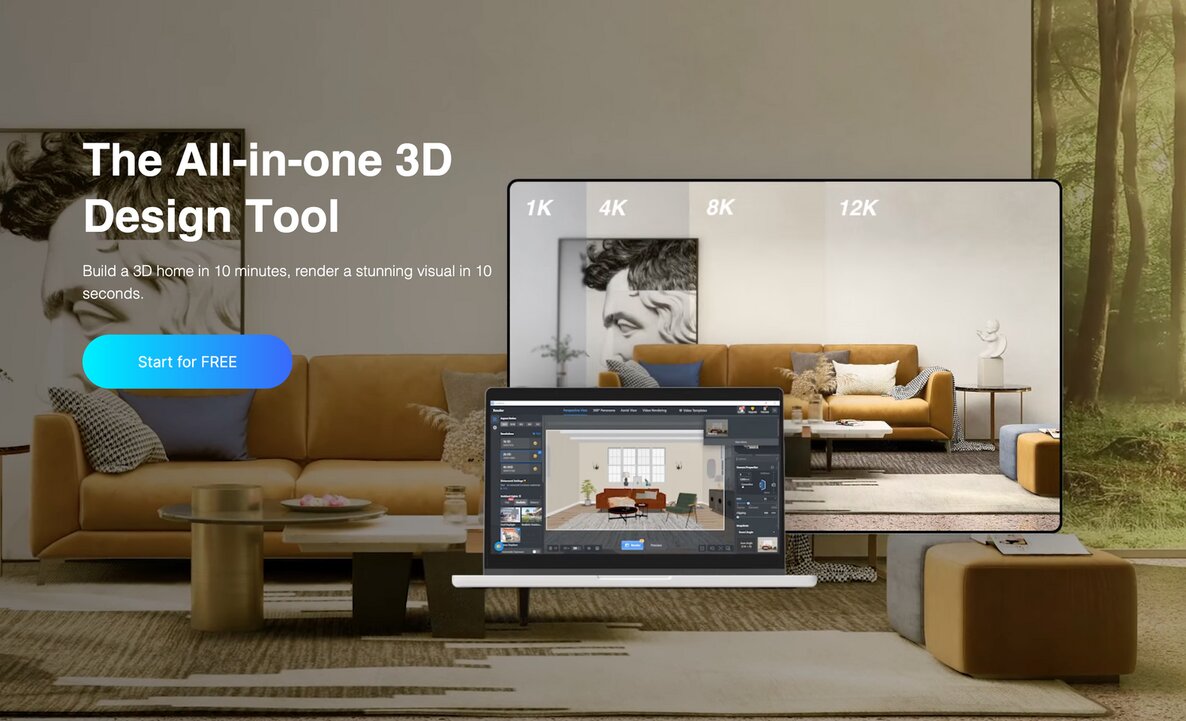Architecture and interior design software capabilities have rapidly developed in supporting design and construction workflows.
However, many programs require a high-end operating system, the process of downloading assets and rendering are very time consuming.
Addressing these pain points, Coohom design software is emerging as a viable solution.
With users all over the world, Coohom was originally developed by @University of Illinois Urbana-Champaign computer science graduate students Victor Huang, Hao Zhu and Hang Chen in 2011.
As more European and North American designers hear about its easy to navigate, drag-and-drop interface, extensive object library, super-fast rendering capabilities and the fact that it operates in the cloud, Coohom is gaining traction.
“Creating 3D visualizations with ‘classic’ tools used to be such a hassle. Coohom, on the other hand, creates 3D visuals in minutes, and it’s so easy to use, it’s almost insane. It gives me exactly what I need without the headache,” says U.K.-based interior designer Julie Rawding.
While designers are trained to envision spaces, this is usually not within a layman’s skillset, so quick and easy 3D visualizations are a very important tool for designers to offer their clients
“Giving clients the ability to ‘see’ their space before making any decisions makes the entire process smoother, clearer and ultimately more collaborative,” explains Rawding.
“As designers, we naturally think in 3D, but for most people, it’s incredibly difficult to imagine a 2D floorplan as an actual 3D space,” agrees Italian designer Anna Manako. “Clients want to see their space—period.”
Since Coohom operates on the cloud, these 360° panoramic renderings can easily be accessed with a link or QR code, emailed or shared via social media.
“Since I travel often, the cloud-based setup is a lifesaver.,” relates Manako. “Working in the cloud simplifies the process because I am not tied to one computer and can work from almost any equipment. For me, it’s an absolute game-changer.”
Manako also appreciates how the software supports her design process and saves time, freeing her up to take on more projects. The intuitive interface enables her to design and modify her layouts relatively quickly. And the large library of objects, décor and design ideas are in line with the latest trends, enabling Manako to present the most up-to-date, relevant solutions. She also likes how any changes are automatically updated in all layouts and documentation.
While projects teams often work with multiple software programs and plugins to address all aspects of design and construction, Coohom offers end-to-end workflow on one platform, from design and construction to client proposals to budgeting.
Another cool feature is 3D lighting design. Designers can access a library of ceiling lights, wall lights, floor lamps, table lamps, pendant lights, etc., or import their own. They can then adjust the brightness, color temperature, direction and shadows, and then render the space to see a realistic rendition of the lighting in the space.
There are specialized design templates for kitchen and bath designs and a few other template offerings.
While the design library is extensive, designers would love to see it continue growing to include more European and North American furniture brands.
“Personally, I’d love to see all of IKEA’s furniture in the library,” requests Rawding.
Coohom offers comprehensive solutions to interior design firms of all sizes, including smaller studios and independent designers. As opposed to other design software solutions, which are rather expensive and may offer very advanced features which aren’t as relevant for smaller firms designing smaller projects, Coohom is likely a better fit.
The company has also invested a lot in training and development with hundreds of tutorials and courses, from beginners to professionals, and a growing community of users posting designs they created with the software.

